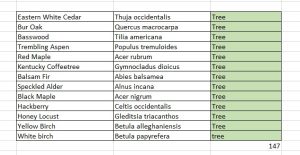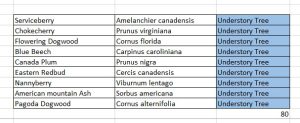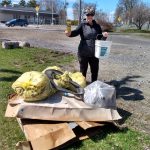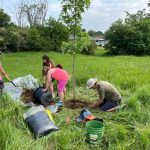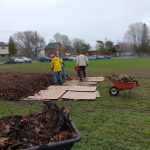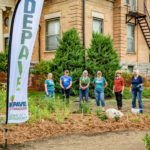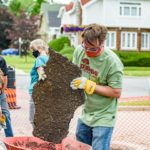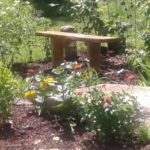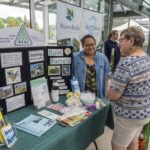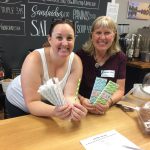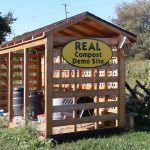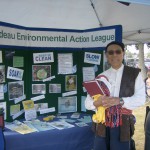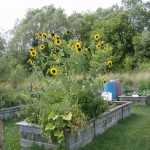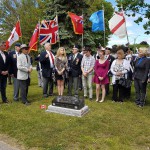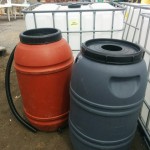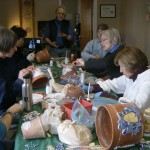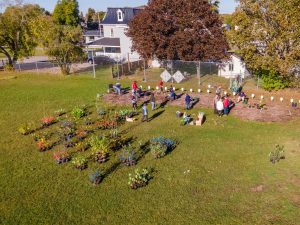 Visitors to the mini forest will see lots of coloured flags alongside each plant: yellow, orange, green and blue. These were used to identify the layer of of the forest that each plant belongs to.
Visitors to the mini forest will see lots of coloured flags alongside each plant: yellow, orange, green and blue. These were used to identify the layer of of the forest that each plant belongs to. A Mini Forest is a densely planted forest with all layers of a real forest. The forests are usually about the size of a tennis court. Ours is a little over 100 square metres, and a little over 300 plants. We used plants that are native to our area so they would be suited to the soil and climate of this area and would better support local wildlife. We divided the whole area into 1 metre square sections and put three plants in each. You’ll notice the colours are mixed up so we would have on of three height layers within each square.
Each of the four natural height layers to the forest were assigned a colour. The orange flags are for Canopy trees which are going to be the tallest and form a canopy over the forest. They would include maples, oaks, and pines. Next is green for the Sub-canopy / or Tree layer: cedars, birches and aspens. These can be big trees but not quite as tall as the canopy layer. Next is blue for Understory Trees: dogwood, serviceberry, and redbud. These are short trees. Last is Yellow for Shrubs: witch hazel, spicebush and hazelnut. They are all pretty small at the moment but as they grow we will see the size differences pretty quickly.
The relative proportion of each layer of tree is planned very carefully as well. We were aiming for the recommended proportions of trees in each layer, which is Canopy 20%, Tree 40-50%, Understory 25-30% and Shrubs 8 – 12%.


